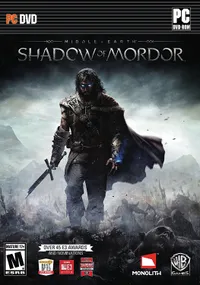Part 1: DirectX 11 Gaming And Multi-Core CPU Scaling
We test five theoretical Intel CPUs in 10 different DirectX 11-based games to determine what impact core count has on performance.
Middle-earth: Shadow of Mordor & Rise of the Tomb Raider
Middle-earth: Shadow of Mordor
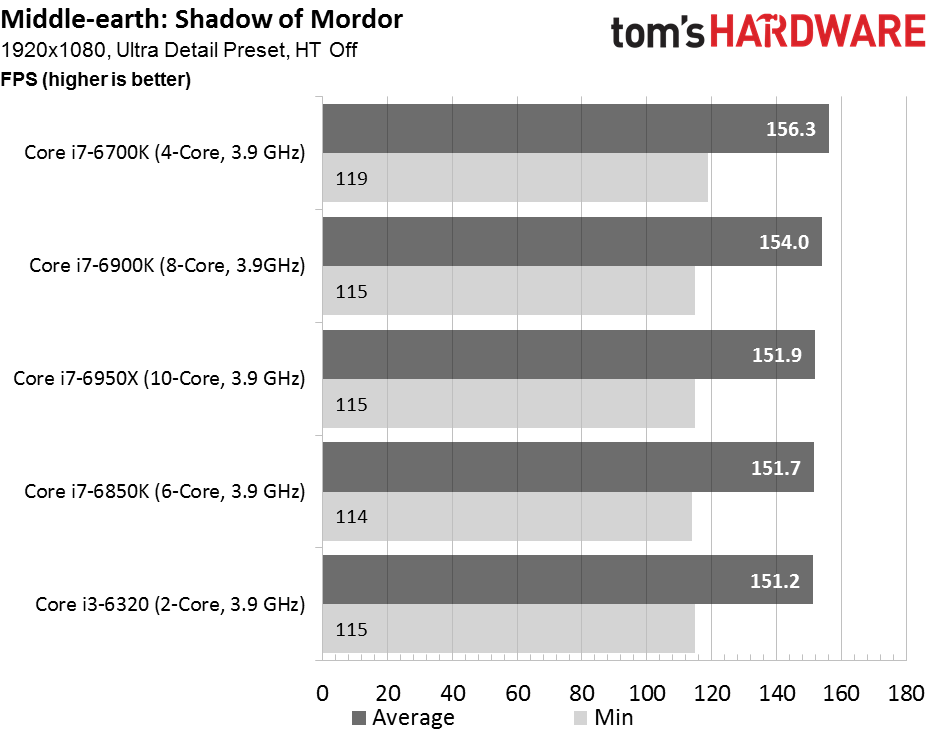
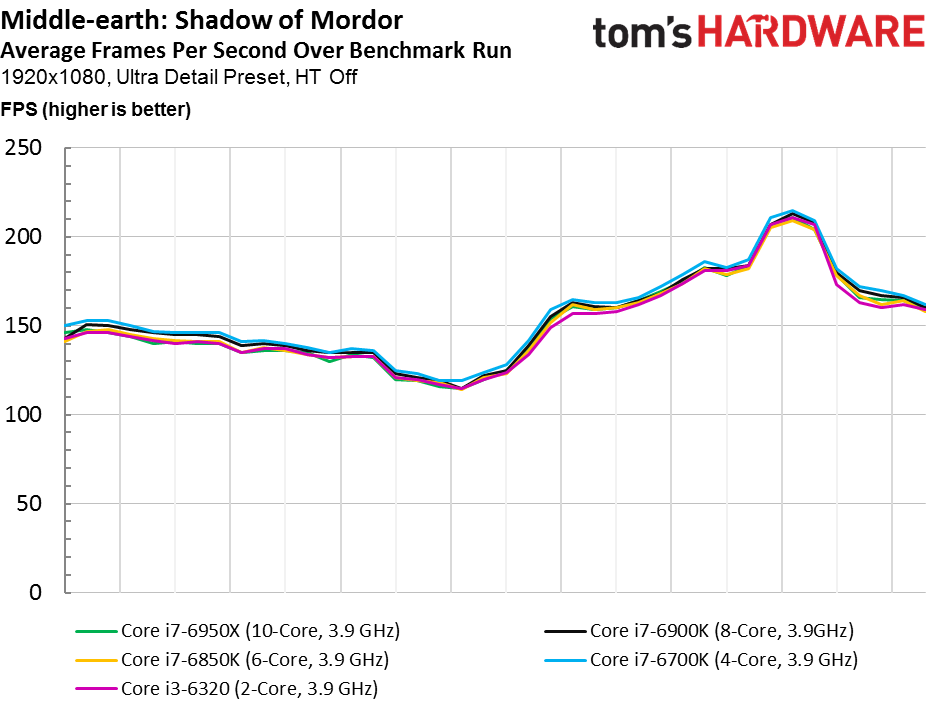


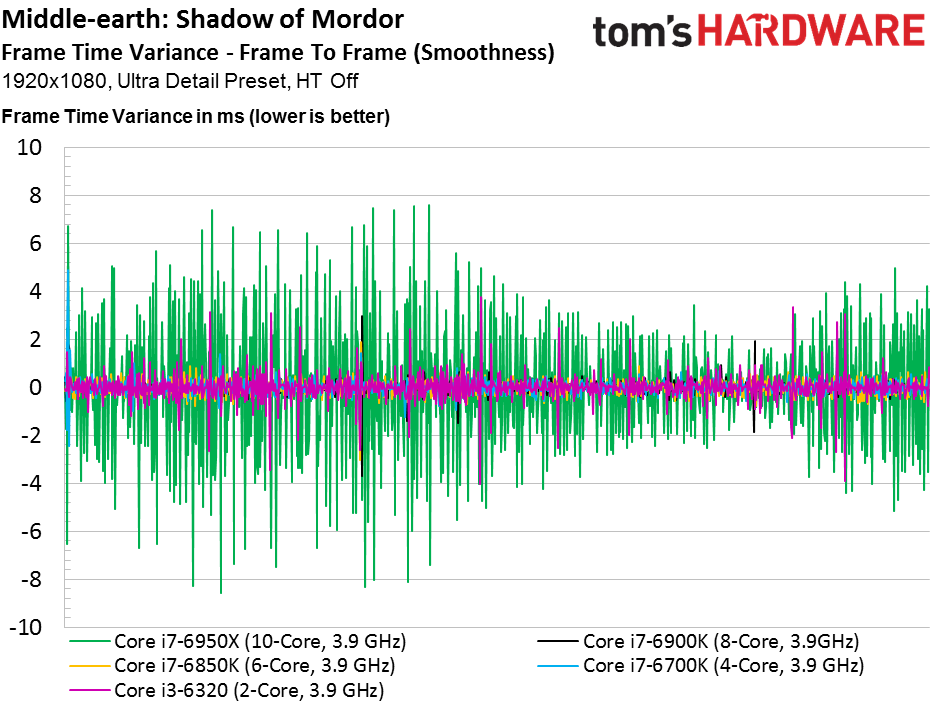
In terms of average and minimum frame rates, Middle-earth is perhaps the least-interesting title in our suite. But the frame time variance charts tell a different story: mainly, the 10-core CPU exhibits strange yet repeatable spikes throughout the run. Intel’s Core i3-6320 has issues of its own, but they’re nowhere near as severe.
Flip back over to the average frame rates, though, and you see every CPU from two to 10 cores exceeding 150 FPS. Given the title’s Core i5-750 minimum requirement, you’d think a Core i3 with HT disabled would suffer more.

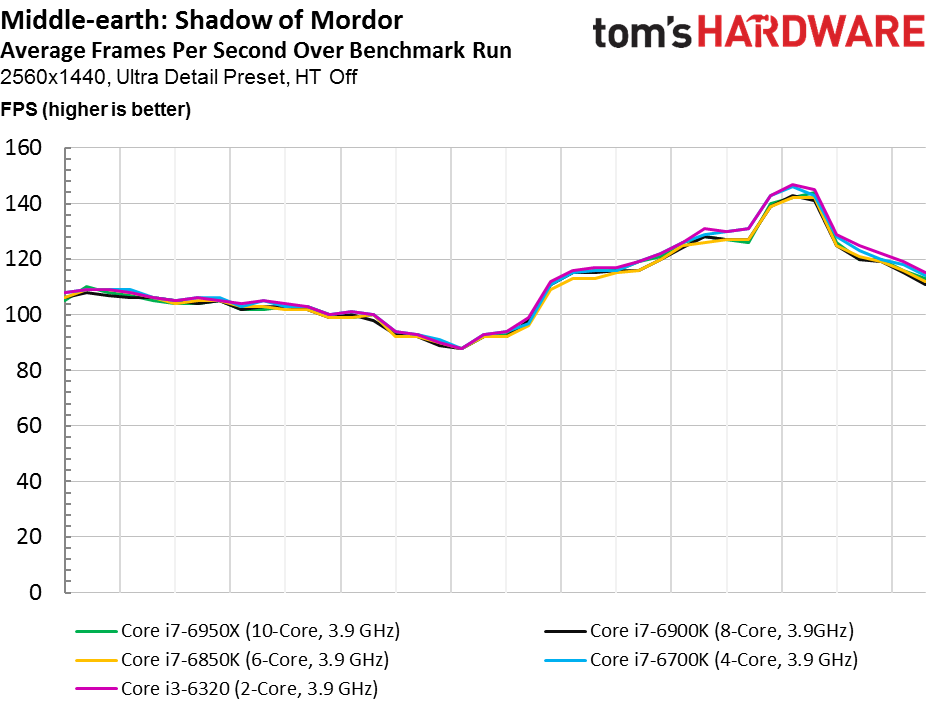
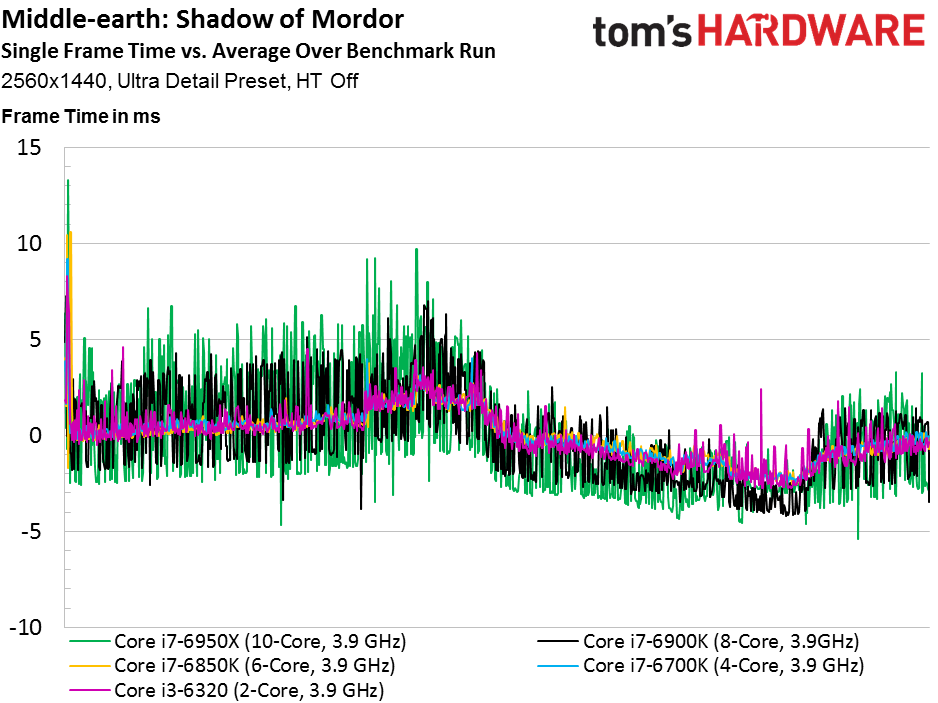

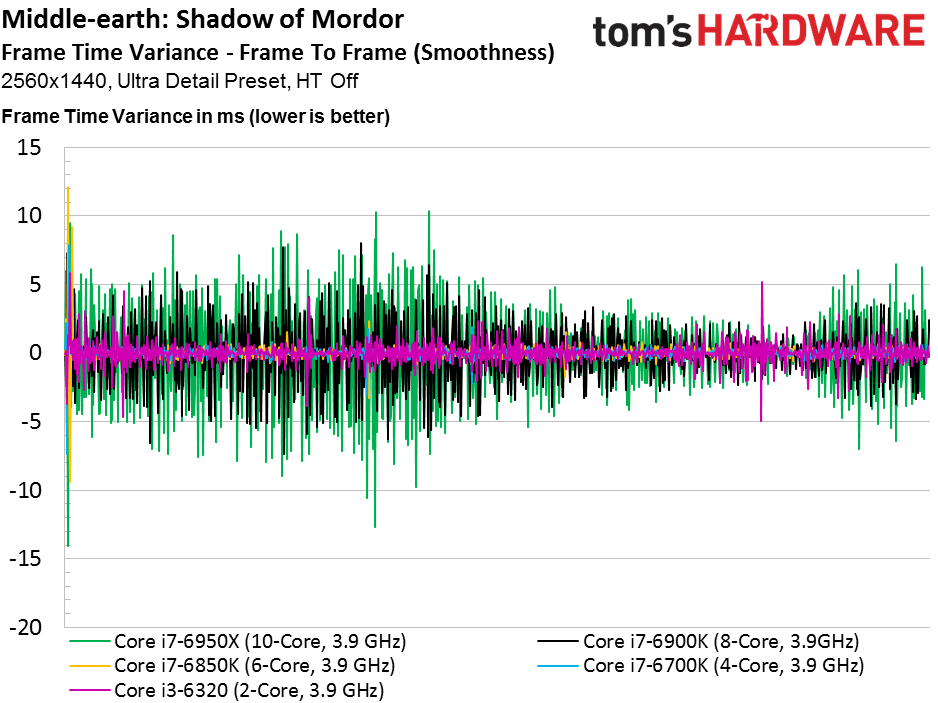
A presumed lack of optimization for multi-core CPUs results in average and minimum frame rates that simply do not change as you pile on host processing resources. However, the move up to 2560x1440 does afflict our eight-core -6900K with the same issue that affected Intel’s Core i7-6950X at 1920x1080. Incidentally, the 10-core CPU still demonstrates frenetic frame times through Middle-earth’s built-in benchmark.
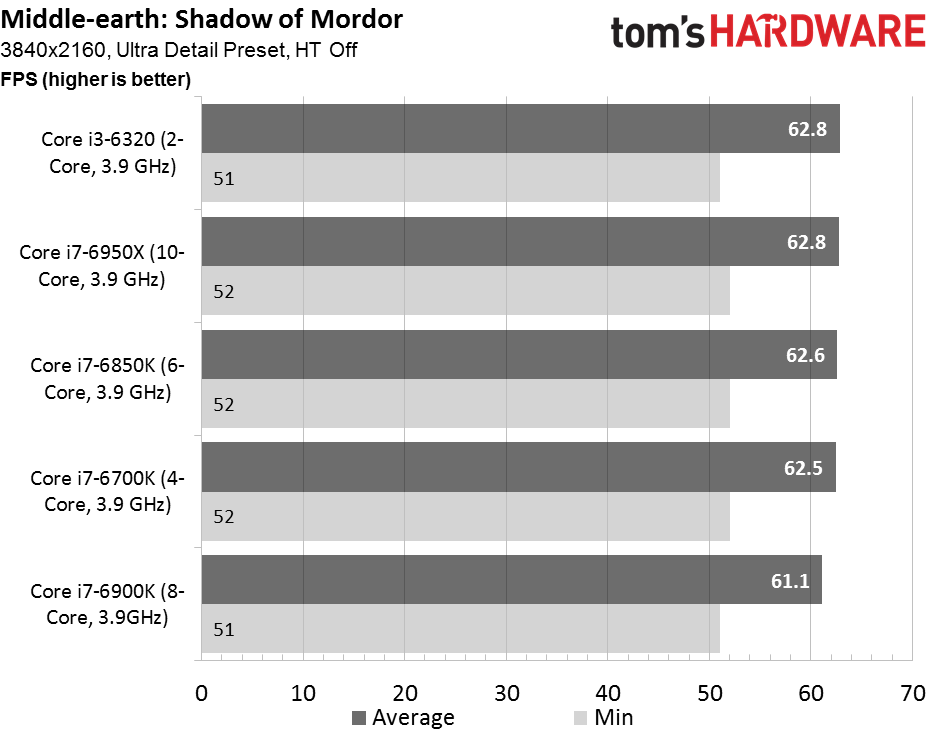
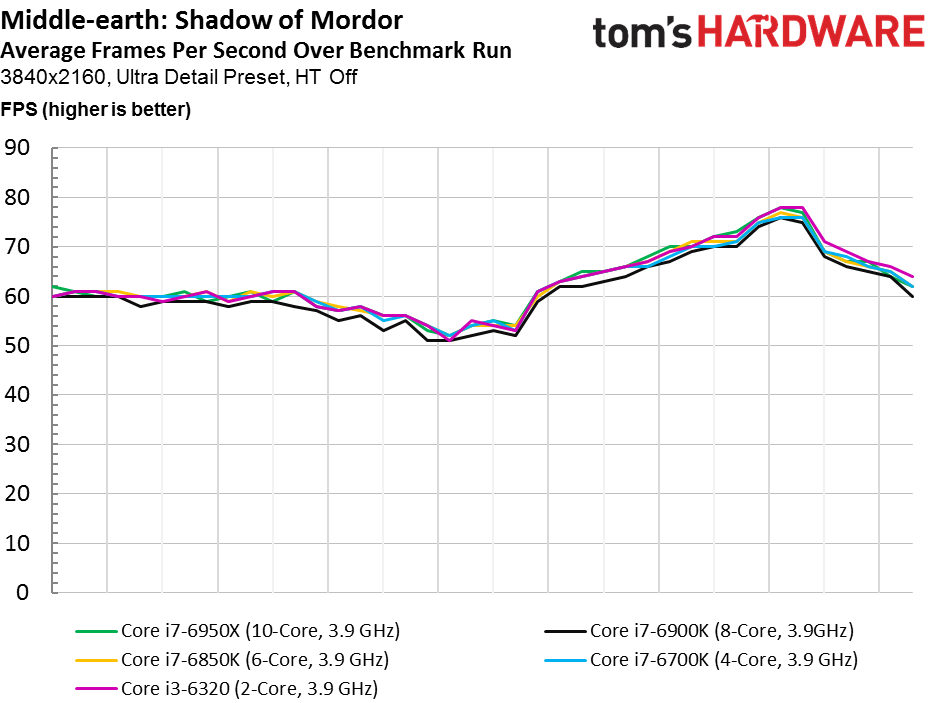
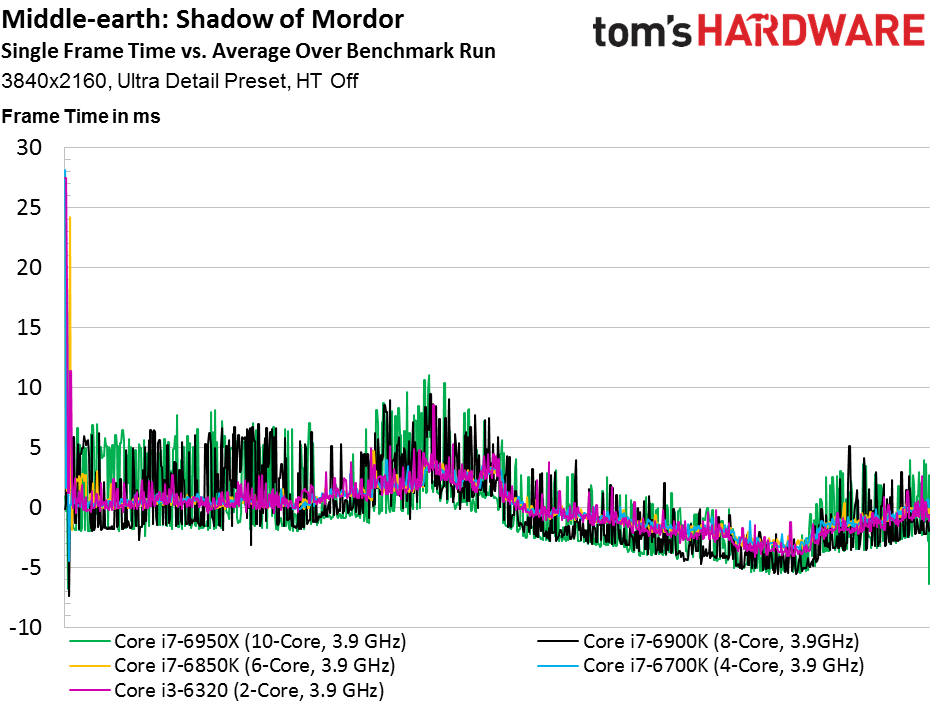


The story changes little from 2560x1440 to 3840x2160—five processors perform similarly, as the highest core counts exhibit odd frame time behavior.
MORE: Best CPUs
MORE: Intel & AMD Processor Hierarchy
MORE: All CPU Content
Get Tom's Hardware's best news and in-depth reviews, straight to your inbox.
Rise of the Tomb Raider
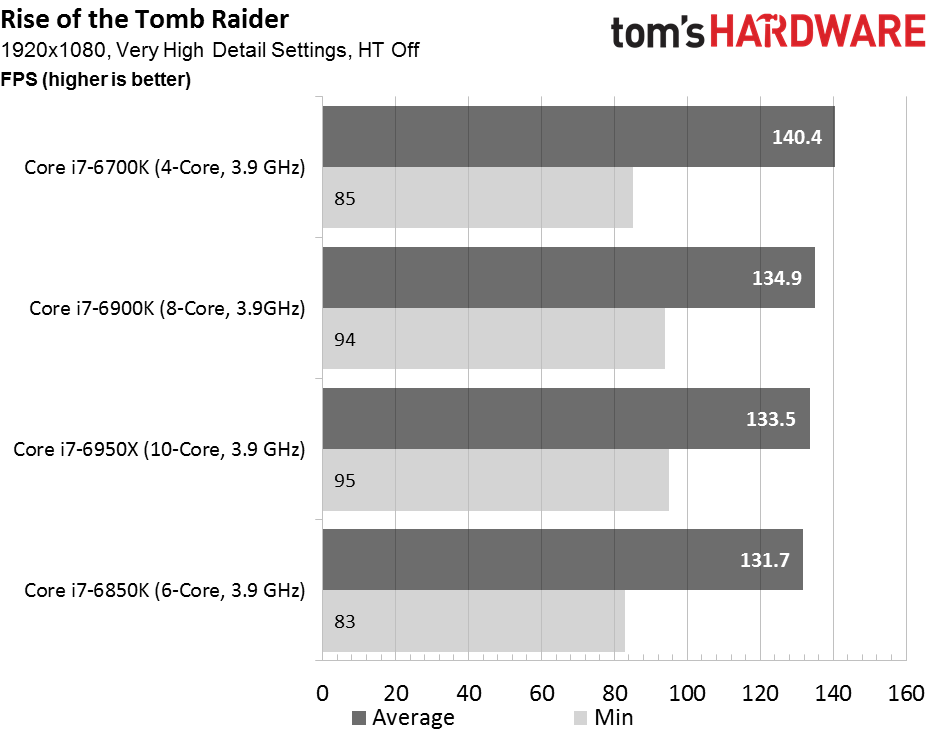
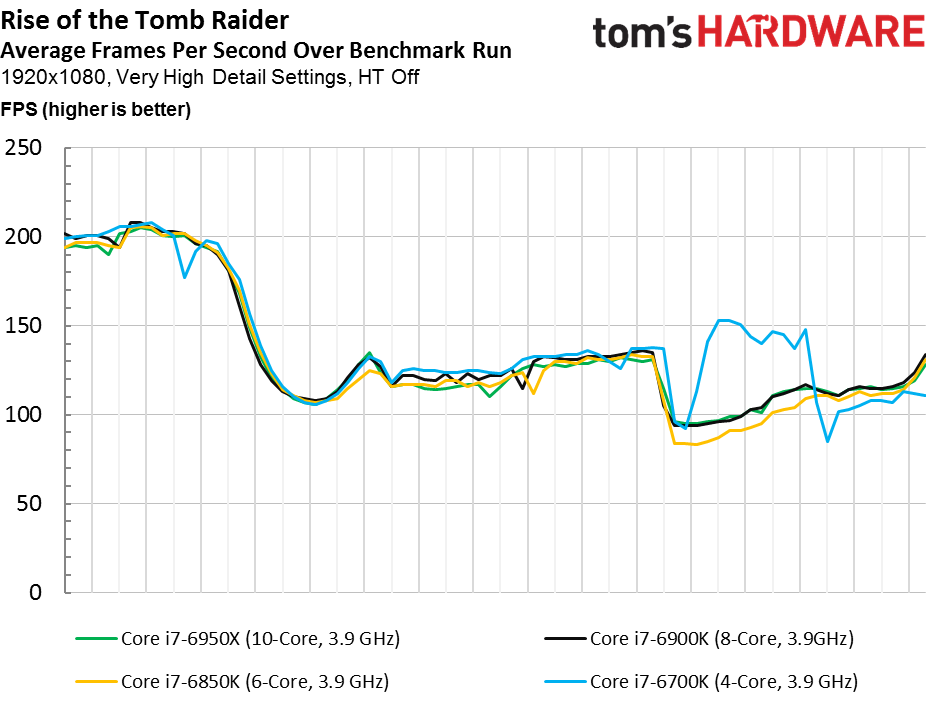

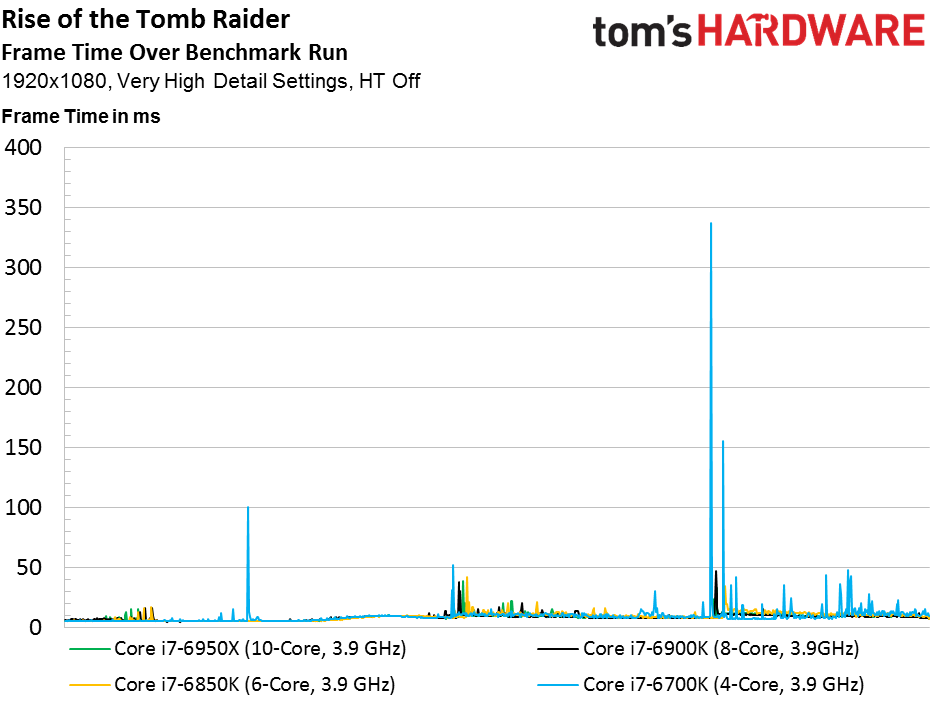
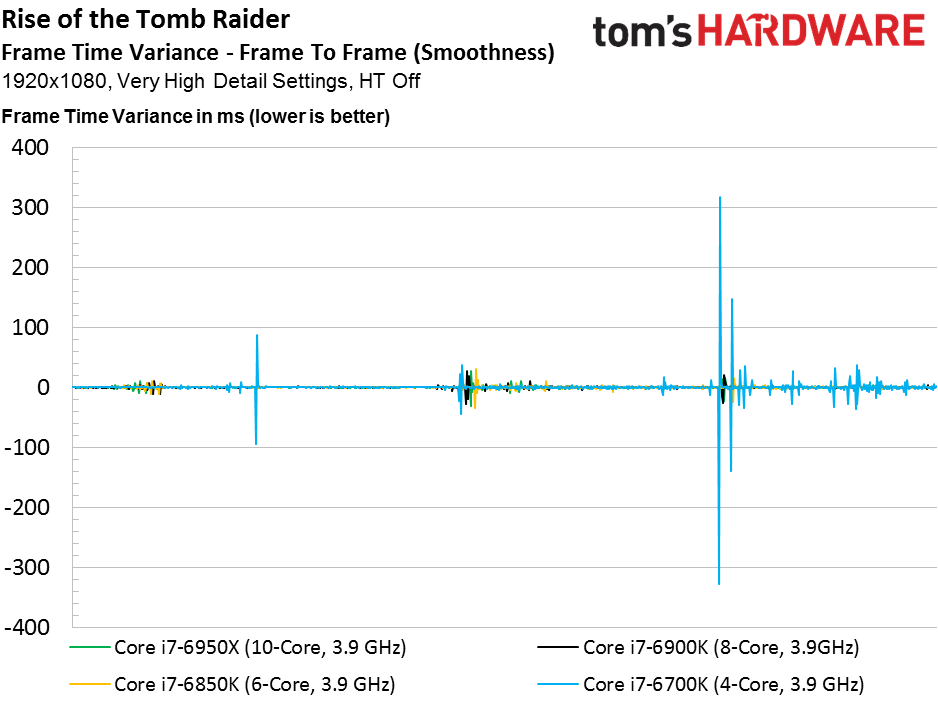
Officially, Rise of the Tomb Raider requires at least a Core i3-2100. Although our Core i3-6320 is significantly faster, remember that we turn off its Hyper-Threading technology to isolate just the physical cores for our experiment. As a result, we’re limited to two threads rather than the four you’d get from a stock -2100. Perhaps that’s why we couldn’t get a successful run out of our dual-core setup at 1920x1080.
The other four CPUs are fairly evenly matched, on the other hand. Intel’s Core i7-6700K does achieve the highest average thanks to a burst of performance during the last quarter of the run. But it subsequently drops to a lower minimum frame rate than the eight- and 10-core CPUs.
Interestingly, the -6700K also suffers the worst frame time spikes through the run. They aren’t frequent, but you’ll certainly “feel” 100 and 300 ms hiccups.
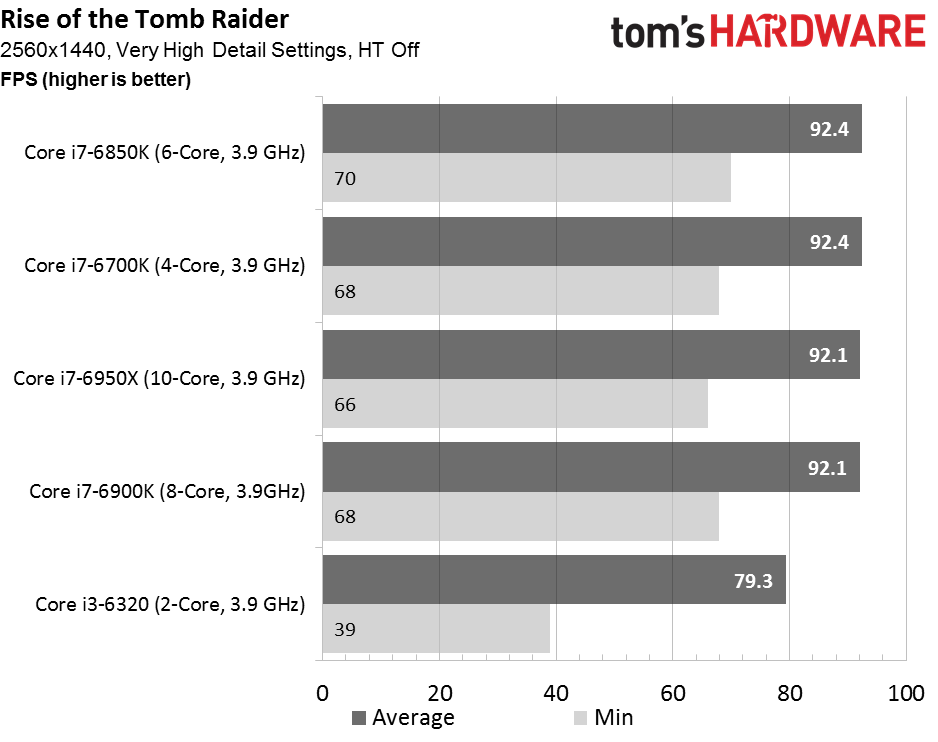
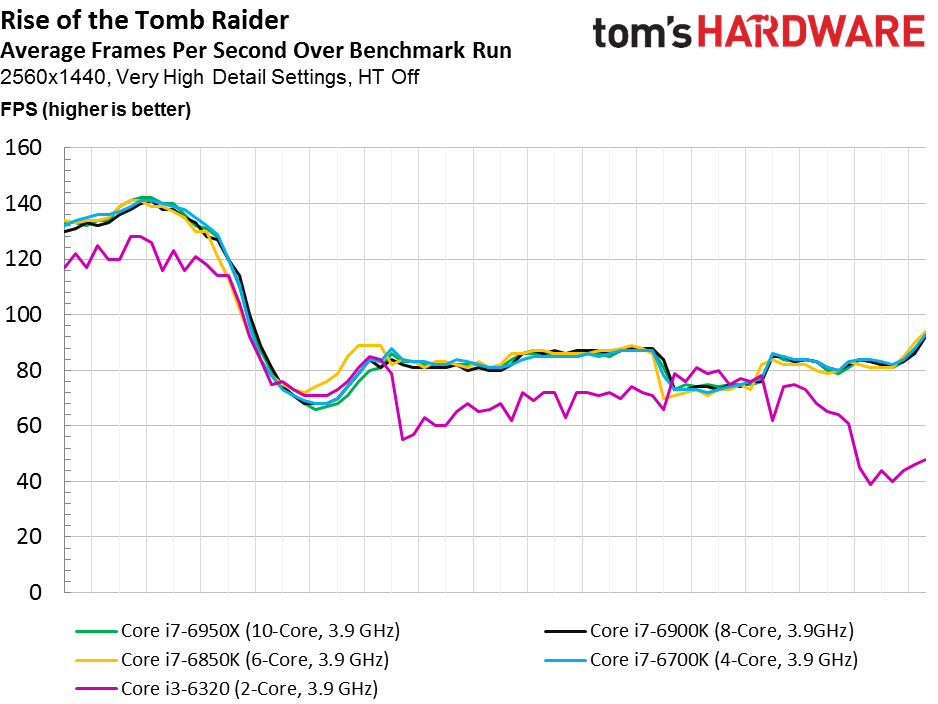


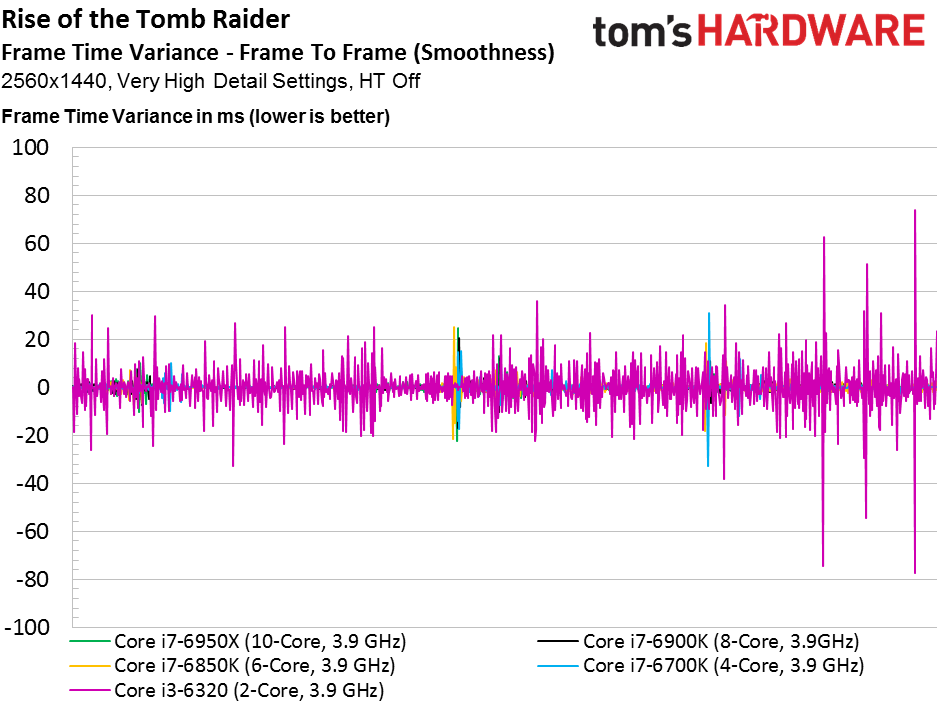
Two cores do make it through our test at 2560x1440, though the low minimum frame rate is a good sign that the frame time results won’t be pretty. Sure enough, exaggerated peaks and valleys illustrate the Core i3’s plight.
Everything else is once again comparable.
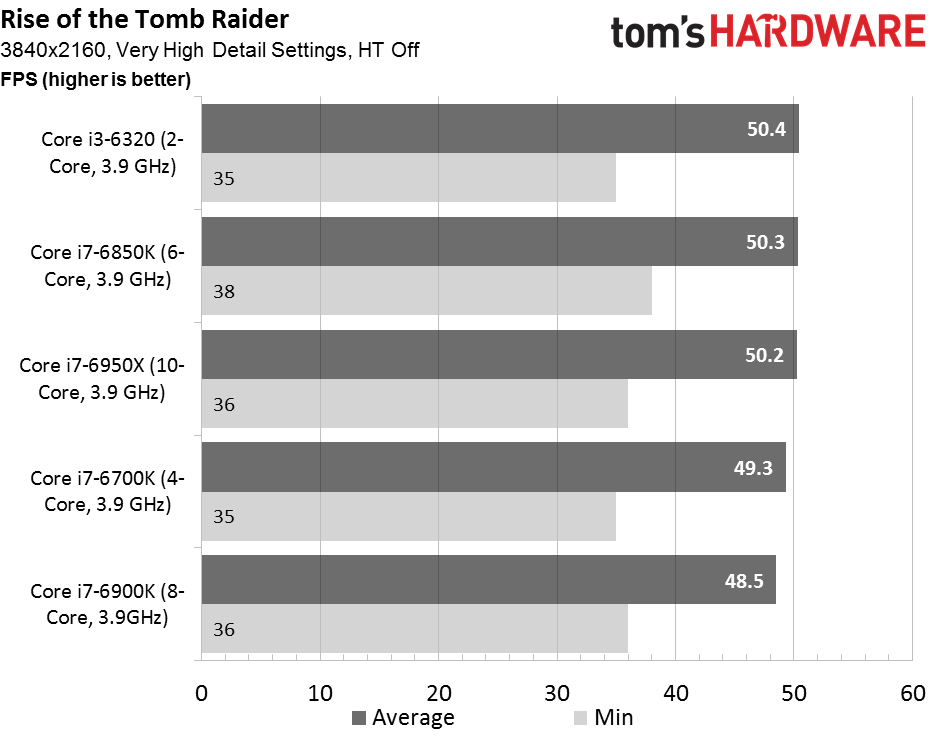
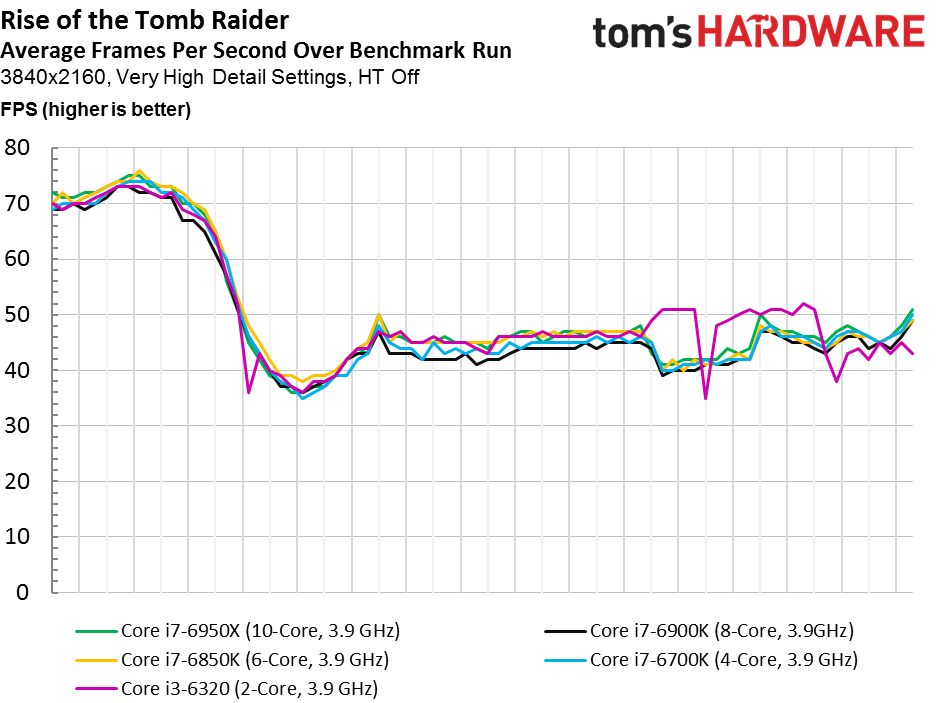

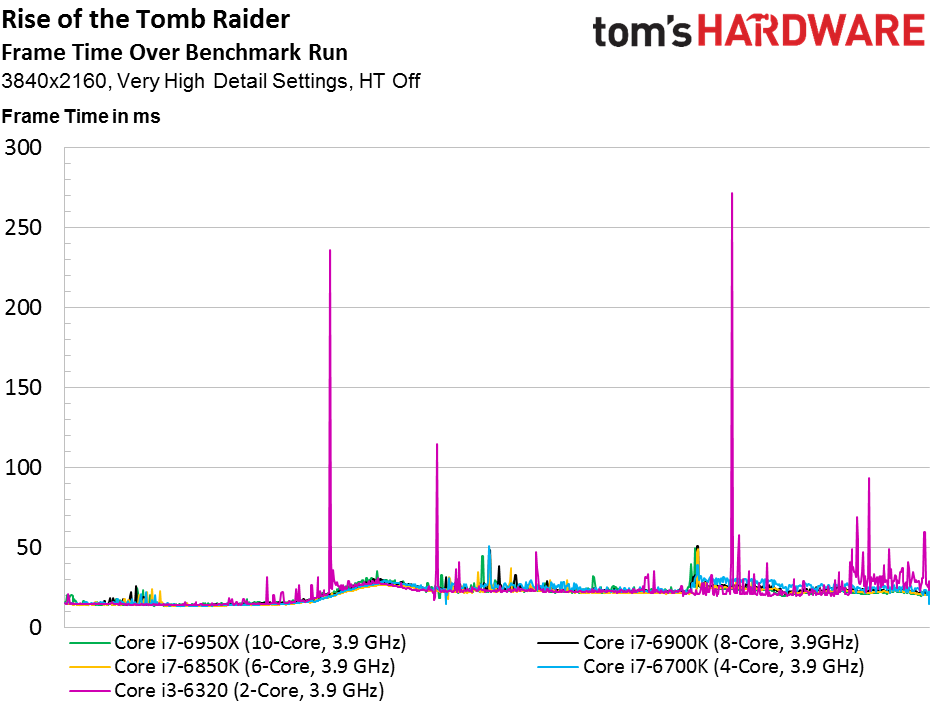
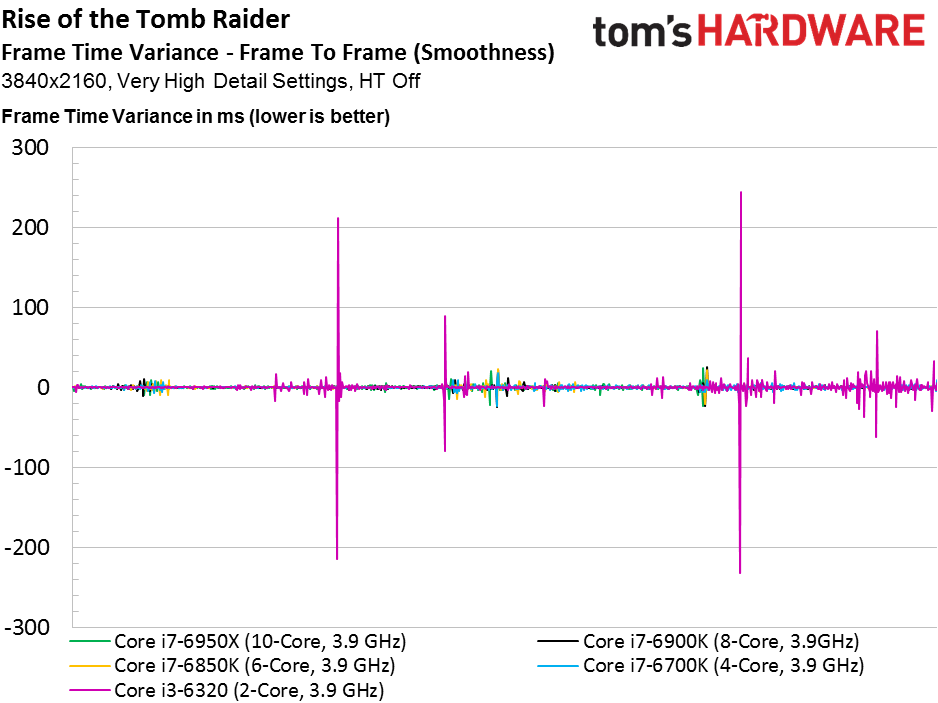
By 3840x2160, Nvidia’s GeForce GTX 1080 is shouldering most of the workload. Superficially, the dual-core i3’s Skylake architecture benefits from this, jumping into a first-place finish in average frame rate (or at least a five-way tie with the other CPUs). Its minimum frame rate isn’t even a red flag. Flip over to the frame time graphs, though, and it’s evident that smoothness is still an issue.
As we saw in our 2560x1440 results, the other four processors behave similarly.
Current page: Middle-earth: Shadow of Mordor & Rise of the Tomb Raider
Prev Page Interview with 4A Games & Metro: Last Light Redux Next Page Interview With Slightly Mad Studios & Project CARS-
ledhead11 Awesome article! Looking forward to the rest.Reply
Any chance you can do a run through with 1080SLI or even Titan SLi. There was another article recently on Titan SLI that mentioned 100% CPU bottleneck on the 6700k with 50% load on the Titans @ 4k/60hz. -
Wouldn't it have been a more representative benchmark if you just used the same CPU and limited how many cores the games can use?Reply
-
Traciatim Looks like even years later the prevailing wisdom of "Buy an overclockable i5 with the best video card you can afford" still holds true for pretty much any gaming scenario. I wonder how long it will be until that changes.Reply -
nopking Your GTA V is currently listing at $3,982.00, which is slightly more than I paid for it when it first came out (about 66x)Reply -
TechyInAZ Reply18759076 said:Looks like even years later the prevailing wisdom of "Buy an overclockable i5 with the best video card you can afford" still holds true for pretty much any gaming scenario. I wonder how long it will be until that changes.
Once DX12 goes mainstream, we'll probably see a balanced of "OCed Core i5 with most expensive GPU" For fps shooters. But for CPU the more CPU demanding games it will probably be "Core i7 with most expensive GPU you can afford" (or Zen CPU). -
avatar_raq Great article, Chris. Looking forward for part 2 and I second ledhead11's wish to see a part 3 and 4 examining SLI configurations.Reply -
problematiq I would like to see an article comparing 1st 2nd and 3rd gen I series to the current generation as far as "Should you upgrade?". still cruising on my 3770k though.Reply -
Brian_R170 Isn't it possible use the i7-6950X for all of 2-, 4-, 6-, 8-, and 10-core tests by just disabling cores in the OS? That eliminates the other differences between the various CPUs and show only the benefit of more cores.Reply -
TechyInAZ Reply18759510 said:Isn't it possible use the i7-6950X for all of 2-, 4-, 6-, 8-, and 10-core tests by just disabling cores in the OS? That eliminates the other differences between the various CPUs and show only the benefit of more cores.
Possibly. But it would be a bit unrealistic because of all the extra cache the CPU would have on hand. No quad core has the amount of L2 and L3 cache that the 6950X has. -
filippi I would like to see both i3 w/ HT off and i3 w/ HT on. That article would be the perfect spot to show that.Reply
